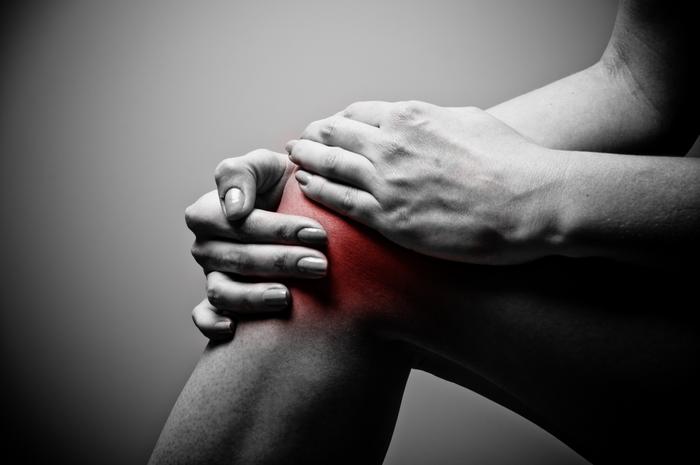Painful truth about knee osteoarthritis: Why inactivity may be more complex than we think
Knee osteoarthritis (OA) is a common cause of pain and joint stiffness. And while physical activity is known to ease symptoms, only one in 10 people regularly exercise. Credit: “Best Walking Shoes for Knee Pain for Women” by gm.esthermax is licensed under CC BY 2.0. Knee osteoarthritis (OA) is a common cause of pain and […]

Knee osteoarthritis (OA) is a common cause of pain and joint stiffness. And while physical activity is known to ease symptoms, only one in 10 people regularly exercise.

Credit: “Best Walking Shoes for Knee Pain for Women” by gm.esthermax is licensed under CC BY 2.0.
Knee osteoarthritis (OA) is a common cause of pain and joint stiffness. And while physical activity is known to ease symptoms, only one in 10 people regularly exercise.
Understanding what contributes to patients’ inactivity is the focus of a world first study from the University of South Australia. Here, researchers have found that people with knee OA unconsciously believe that activity may be dangerous to their condition, despite medical advice telling them otherwise.
The study found that of those surveyed, 69% of people with knee pain had stronger implicit (unconscious) beliefs that exercise was dangerous than the average person without pain.
It’s an interesting finding that not only highlights the conflicted nature of pain and exercise, but also that what people say and what people think, deep down, may be entirely different things.
Lead researcher, and UniSA PhD candidate based at SAHMRI, Brian Pulling, says the research provides valuable insights for clinicians treating people with knee OA.
“Research shows that physical activity is good for people with knee OA, but most people with this condition do not move enough to support joint or general health,” Pulling says.
“To understand why people with OA might not be active, research studies typically use questionnaires to assess fear of moving. But unfortunately, questionnaires are limited – what we feel deep down (and how our system naturally reacts to something that is threatening) may be different to what we report. And we still know that many people are avoiding exercise, so we wanted to know why.”
To assess this, the researchers developed a tool that can detect and evaluate people’s implicit beliefs about exercise; that is, whether they unconsciously think activity is dangerous for their condition.
“We found that that even among those who said they were not fearful about exercise, they held unconscious beliefs that movement was dangerous,” Pulling says.
“Our research shows that people have complicated beliefs about exercise, and that they sometimes say one thing if asked directly yet hold a completely different implicit belief.
“People are not aware that what they say doesn’t match what they choose on the new task; they are not misrepresenting their beliefs.
“This research suggests that to fully understand how someone feels about an activity, we must go beyond just asking directly, because their implicit beliefs can sometimes be a better predictor of actual behaviour than what people report. That’s where our tool is useful.”
The online implicit association test presents a series of words and images to which a participant must quickly associate with being either safe or dangerous. The tool intentionally promotes instant responses to avoid deliberation and other influencing factors (such as responding how they think they should respond).
Associate Professor Tasha Stanton says that the new tool has the potential to identify a group of people who may have challenges increasing their activity levels and undertaking exercise.
“What people say and what people do are often two different things, Assoc Prof Stanton says.
“Having access to more accurate and insightful information will help health professionals better support their patients to engage with activity and exercise. It may also open opportunities for pain science education, exposure-based therapy, or cognitive functional therapy…things that would not usually be considered for someone who said that they were not scared to exercise.”
Researchers are now looking to see if implicit beliefs are directly associated with behaviour and are asking for people to complete the Implicit Association Test (takes seven minutes). At the end of the test participants are given their results in comparison to the rest of the population.
To take the test, please click here: https://unisasurveys.qualtrics.com/jfe/form/SV_0OZKUqzBNtiKGF0
Notes to Editors:
The full paper is available here: Pulling, Brian W; Braithwaite, Felicity A; Mignone, Joanne; Butler, David S; Caneiro, J.P; Lipp, Ottmar V; Stanton, Tasha R. People with painful knee osteoarthritis hold negative implicit attitudes towards activity. PAIN
…………………………………………………………………………………………………………………..
Media contact: Annabel Mansfield M: +61 479 182 489 E: Annabel.Mansfield@unisa.edu.au
Researcher: Brian Pulling E: brian.pulling@unisa.edu.au
Journal
Pain
DOI
10.1097/j.pain.0000000000003210
Method of Research
Survey
Subject of Research
People
Article Title
People with painful knee osteoarthritis hold negative implicit attitudes towards activity
Article Publication Date
16-Apr-2024
COI Statement
B.W.P. is a PhD candidate supported by an Arthritis Australia
Scholarship, a University President’s Scholarship (University of
South Australia) and from a National Health & Medical Research
Council of Australia Project Grant (ID1161634). F.A.B. is
supported by the John Stuart Colville Fellowship through The
Hospital Research Foundation – Arthritis. FAB has received
speaker fees for providing lectures related to pain and blinding in
clinical trials. J.M. has no conflict of interest to declare. D.B.
receives royalties from NOIGroup Pty Ltd for books on pain and
osteoarthritis. J.P.C. has received speaker fees for lectures and/
or workshops on the biopsychosocial management of pain, from
special interest physiotherapy groups and multi-disciplinary
audiences of clinicians and researchers. O.V.L. has no conflict
of interest to declare. T.R.S. was supported by a National Health
& Medical Research Council of Australia Career Development
Fellowship (ID1141735). T.R.S. has received payment for lectures
on pain and rehabilitation and receives royalties from NOIGroup
Pty Ltd for a book on osteoarthritis and pain.
What's Your Reaction?

































